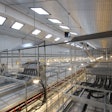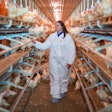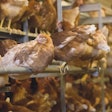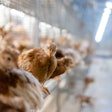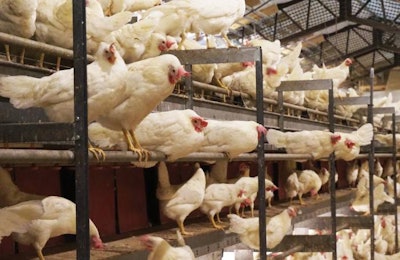
Layer welfare schemes establish minimum space requirements for hens and cage-free layers are provided more space per bird than their cage-housed counterparts. So, converting a cage house to cage free would logically mean you wind up with fewer hens housed, except that isn’t always the case.
Read the entire report about the cage-free conversion exclusively in the August issue of Egg Industry.
Henning Construction invited Egg Industry to tour a high-rise farm that is undergoing a conversion from high-rise cage housing to two floors per house of cage-free aviaries. The tour showed how the bottom and top floors of the layer house were utilized to maximize space.
This Midwestern farm had nine layer houses that are 50 feet by 730 feet. The farm housed 891,000 hens at 67 square inches per bird in high-rise cages. Using Vencomatic Bo Legg Terrace aviaries on both floors of the houses, the cage-free configuration of the remodeled buildings will allow them to house 1,143,000 hens, a 28 percent increase. Manure storage is moved out of the layer house, so there is some new construction required.
The same kind of conversion can also be done on pullet farms, like the one that supplies this layer complex. But the decision over whether to convert existing housing from cage to cage-free requires answers to several questions, and a cost analysis.









